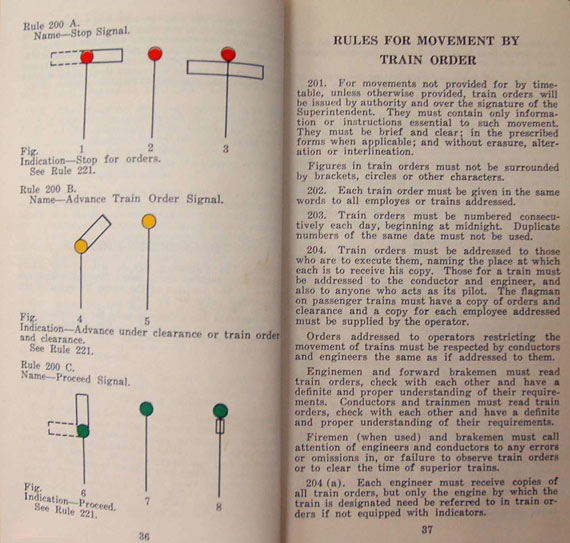Cabinet 12: Technical Aspects of Railroads

United States Department of the Interior, The Alaska Railroad. Rules and Regulations. May 1956.
Rail enthusiast Maxwell Taylor begins his book on Railway Signalling (below) by answering the question ‘What are signals for?’ – ‘Let it be said that their primary purpose is to prevent one train from running into another.’ Safety is behind this core operation of rail, and obeying the signals is paramount. The first signal in England was installed on the Liverpool and Manchester line in 1834; a tall post with a revolvable wooden board on top that indicated ‘on’ or ‘off’ positions. As traffic and speed increased, so did signal complexities. Not only are there flag, whistle signals, and distant signals, but there are also ground-level signals, points, carriage indicators, speed indicators, and many more. Traditionally hand-operated and based on semaphore principles, most signals, like colour-light ones, are now power- or computer-operated. A few signals and their meanings are depicted in the above Alaska Railroad Rules book.

Maxwell Taylor, Railway Signalling. London: Sampson Low, 1949.

